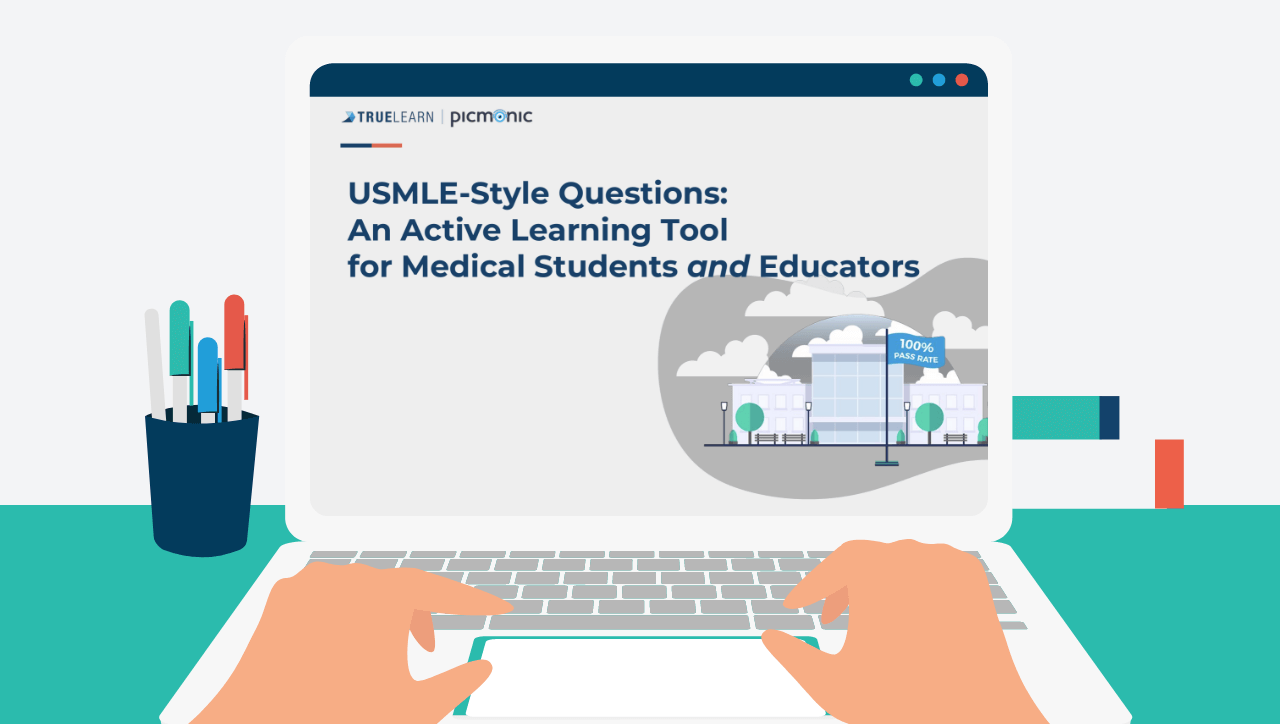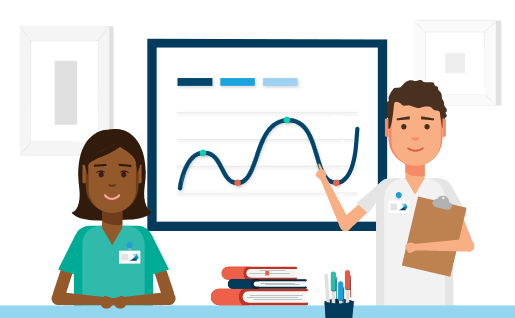The Powerful Effects of Active Learning Strategies on Medical School Learning and Outcomes
For the current generation of medical students, the concept of a classroom has evolved beyond the four walls of an educational institution setting. Instead, today’s learning often takes a 360-degree approach to include clinical experiences, online tools, virtual lessons, and peer and independent study sessions. To support such dynamic and versatile settings, medical educators must incorporate active learning alongside instruction so that students can maximize academic hours and learning opportunities.

What are Active Learning Strategies
Active learning turns students from passive listeners to active participants, involving them in tasks that stimulate cognitive processes like problem-solving, elaborative questioning, and self-reflection. Rather than simply receiving information, students actively construct their knowledge through methods that include asking “how” and “why” questions, practicing real-world applications, and reflecting on their thought processes and comprehension. These include discussions, problem-solving, case studies, role play, questions, and games—activities that promote deep thinking while guiding learners on effective, intuitive ways to apply and transfer knowledge.
Other strategies for implementing active learning include:
- Varied practice Students apply knowledge to different contexts by engaging in a variety of activities
- Interleaving Switching between related concepts to discern patterns across different areas of knowledge for a more holistic understanding
- Practice retrieval Using techniques like flashcards and low-stakes quizzes, students actively recall material they have learned, leading to better long-term knowledge retention
- Spaced repetition Students review the material over extended periods and at increasing time intervals, deepening long-term memory processing and improving ease of recall
Why Active Learning Works and How It Keeps Students Engaged
Active learning is effective because it aligns with the brain’s natural pathways for processing and storing information, helping students learn and retain knowledge better and recall information easily. By placing students at the heart of the educational process, it encourages them to interact meaningfully with the content, each other, and the instructor. This not only enhances classroom and learning engagement but also encourages students to think independently as they’re not merely receiving information in a passive manner.
To augment didactics and drive optimal learning, performance, and program outcomes, educators can easily integrate active learning strategies and activities into the curriculum. One powerful tool that has proven its efficiency and efficacy is quizzing.
Quizzing actually combines two proven learning strategies: spacing repetition (students review material over extended periods and at increasing time intervals, deepening long-term memory processing and improving ease of recall) and practice retrieval (students actively recall material they have learned using techniques like flashcards and low-stakes quizzes). Together, they form the “spacing-retrieval” effect, delivering more impact than relying on either strategy alone.
Quizzing and Practice Questions As the Ultimate Active Learning Tools
Versatile and flexible, quizzing can be adapted and customized to suit learning needs, strengths and weaknesses, and goals. In a study involving 151 medical students, quizzing significantly improved post-test scores from just 3% scoring in the range of 61%-80% pre-test to 93% scoring above 81% post-test.
Additionally, quizzing can provide faculty with real-time performance data and feedback to quickly and objectively gauge students’ comprehension, highlight knowledge gaps, pinpoint individual strengths and weaknesses, and identify at-risk students. These insights will then inform educators on the best ways to support students’ learning needs, optimize their exam readiness, and maximize their chances of a first-time pass on USMLE® Step 1—the first of a three-part licensure exam that has seen declining first-time pass rates in recent years.
Faculty can help mitigate this risk and ensure students are on track to meet program and licensure goals by incorporating quizzing across the curriculum.
How Medical Schools Can Easily Integrate Quizzing Across the Curriculum
Quizzing can be deployed in several ways: as student assignments, pre-classroom exercises, formative and summative assessments, or as a low-stakes learning or practice tool.
Low-stakes quizzes (LSQ) let students focus on the content they have learned and practice recalling the information from memory without the pressure of being graded or penalized if they get an answer wrong. This way, they—and their instructors—can observe how well they have understood the material or if they need more guidance.
In the pre-clinical years, quizzing will help students establish a solid foundation of basic sciences, supporting long-term retention and ultimately driving optimal pass rates on USMLE® Step 1. During clinical years, quizzing can be used to ensure students are developing knowledge application and clinical judgment—essential for optimizing USMLE® Step 2 CK scores and NBME Subject Exams performance. Both are critical for ensuring students have the best residency match outcomes.
TrueLearn Supports Active Learning Strategies in the Classroom
Digital learning platform, TrueLearn, offers a full suite of curricular tools that enable medical school programs and faculty to easily implement active learning strategies in the classroom. These include quizzing features that can be customized to suit different needs, steering students toward optimal learning and exam outcomes.
Programs can map our high-yield USMLE® Step 1 and Step 2 CK practice questions to their unique curriculum, enabling faculty to quickly find relevant questions to leverage in didactics or as quizzes to assess student knowledge. Faculty can also choose to reserve questions that students can’t access for their independent studies. These questions can then be used exclusively for faculty-assigned quizzes, providing a more accurate assessment of students’ knowledge.
TrueLearn is also integrated with the leading audio-visual mnemonic platform, Picmonic, which breaks down complex medical concepts into bite-sized, memorable video lessons to accelerate learning, strengthen retention, and ease information recall. Together, TrueLearn and Picmonic form a powerful learning loop whereby students establish a strong foundation of basic sciences knowledge with Picmonic, then self-assess their ability to think critically and apply knowledge via TrueLearn’s board-style practice questions and quizzing features. When they miss a question, they can immediately revisit the relevant material from Picmonic to reinforce the information in their long-term memory and deepen their comprehension.
Additionally, TrueLearn sits on a robust data analytics engine with comprehensive reporting capabilities. Programs that partner with us will receive real-time and actionable insights into individual, cohort, and program performance as well as longitudinal data.
This helps address the top three challenges that medical educators highlighted in our survey:
- Identifying at-risk students (39%)
- Ensuring students retain basic science and preclinical content to ensure optimal Step 2 and shelf performance (38%)
- Measuring board exam readiness and performance within the curriculum (36%)

References & Footnotes
1 Dengri C, Gill A, Chopra J, et al. A review of the quiz, as a new dimension in medical education. Cureus. 2021;13(10). doi:10.7759/cureus.18854
*The USMLE® and National Board of Medical Examiners® (NBME®) subject exams are trademarks of the National Board of Medical Examiners. This content is not endorsed or approved by NBME.



